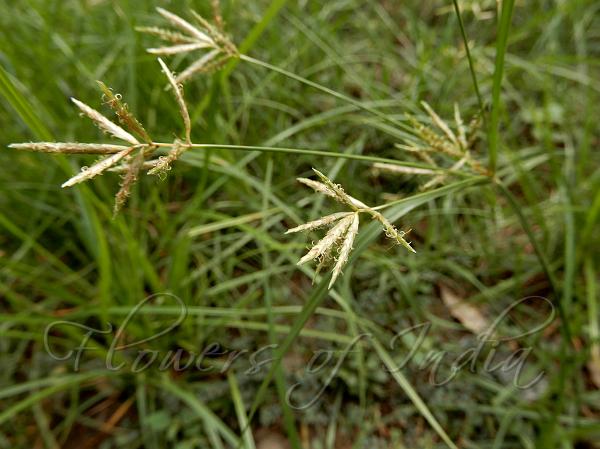|
| Common Nut Sedge |
|

|

| File size | 618279 |
| Original date | 7/29/23 3:50 PM |
| Resolution | 3648 x 2736 |
| Flash | Flash did not fire, auto |
| Focal length | 4.3mm |
| Exposure time | 1/200s |
| Aperture | 3.4 |
| Focus Distance | |
| Metering Mode | Center weighted average |
| Camera make | NIKON |
| Camera model | COOLPIX A900 |
| Sensor type |
|
|
|
|
Photo: |
Botanical name: Cyperus rotundus Family: Cyperaceae (Sedge family)
Common Nut Sedge is a perennial plant, that may reach a height of up to 40
cm. The names "nut grass" and "nut sedge" (shared with the related species
Cyperus esculentus) are derived from its tubers, that somewhat resemble
nuts, although botanically they have nothing to do with nuts. Leaves
sprout in ranks of three from the base of the plant. The flower stems have
a triangular cross-section. The flower is bisexual and has three stamina
and a three-stigma carpel. The fruit is a three-angled achene. The root
system of a young plant initially forms white, fleshy rhizomes. Some
rhizomes grow upward in the soil, then form a bulb-like structure from
which new shoots and roots grow, and from the new roots, new rhizomes
grow. Other rhizomes grow horizontally or downward, and form dark
reddish-brown tubers or chains of tubers.
| Identification credit: Prashant Awale | Photographed in Delhi & Mumbai. |
• Is this flower misidentified? If yes,